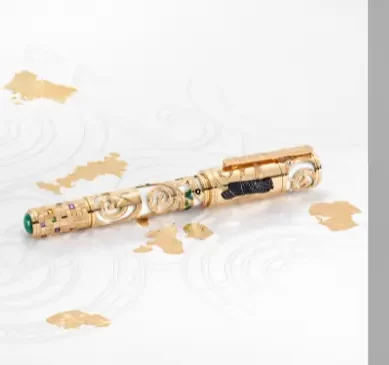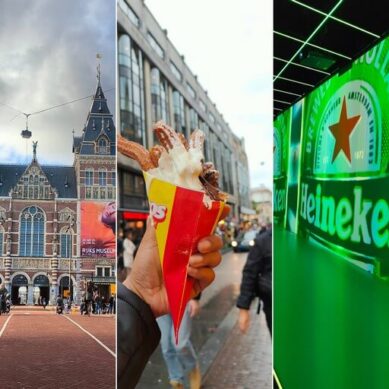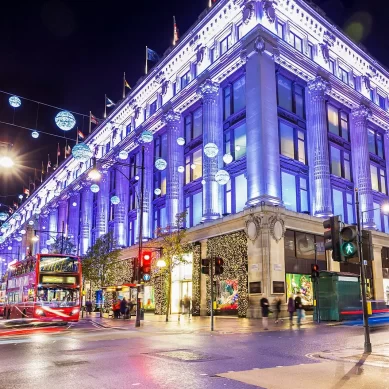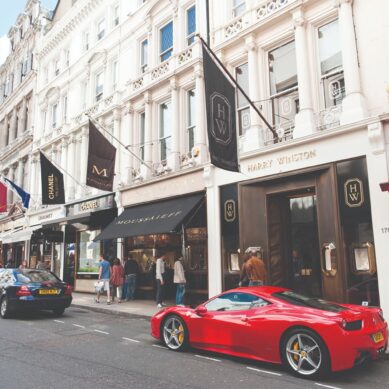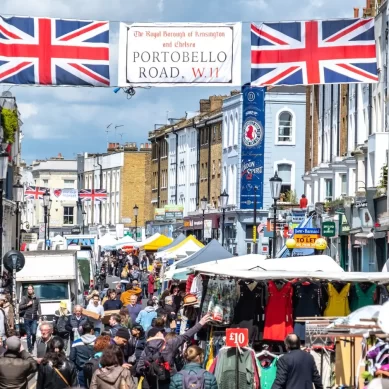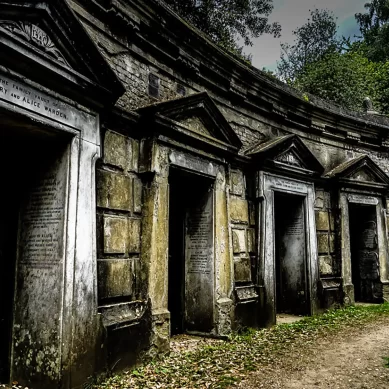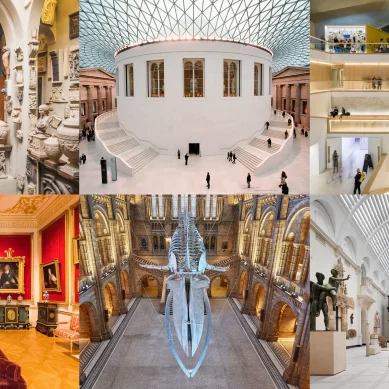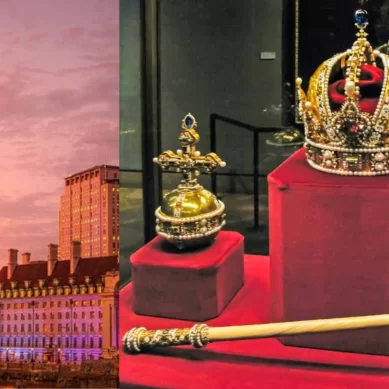London is a treasure trove of history, culture, and art, and its museums are a testament to that. With world-class collections spanning everything from ancient Egyptian mummies to modern masterpieces, there’s a museum in London to pique every interest. Whether you’re an art aficionado, a history buff, or simply curious about the world around you, you’re sure to find something to fascinate you in one of London’s many amazing museums. London’s museums cater to every niche interest as well. For science enthusiasts, the Natural History Museum boasts a giant blue whale skeleton in its grand entrance hall, while the Science Museum will take you on a journey through human innovation and discovery. Fashionistas will swoon over the exquisite clothing and textiles at the Victoria and Albert Museum, while music lovers can delve into the world of sound at the Horniman Museum, which even houses a collection of historical musical instruments you can hear being played! With such a diverse range of museums, London guarantees an unforgettable cultural experience. Let us take a tour in depth.
Victoria and Albert Museum
The Victoria and Albert Museum is a renowned British institution that is home to what is widely considered the most exceptional collection of decorative arts in the world. It is located in South Kensington, London, near the Science Museum and the Natural History Museum. The establishment of the museum can be traced back to 1852, when the British government founded the Museum of Manufacturers in Marlborough House, St. James. The museum primarily contained a collection of decorative arts objects that were previously exhibited at the Crystal Palace, the venue for the Great Exhibition of 1851. In 1857, the items were moved to the South Kensington Museum and exhibited again. The government took this action to broaden the tastes and knowledge of people who were interested in British products. The collection quickly exceeded the capacity of its current location, prompting the development of plans for a new museum. In 1899, the museum was given the new name of the Victoria and Albert Museum. When Queen Victoria laid the cornerstone for the current structure, Sir Aston Webb had already created it. This edifice was inaugurated in 1909. Subsequently, the museum’s premises have undergone alterations and expansions, including the incorporation of neighboring buildings. The Victoria and Albert Museum oversees the Museum of Childhood, located in Bethnal Green, a neighbourhood within the Tower Hamlets borough.
The Design Museum
The Design Museum is dedicated to the exploration and exhibition of modern design in various disciplines, including architecture, fashion, graphics, product design, and industrial design. The museum was established by Sir Terence Conran in 1989 and currently functions as a central gathering place in the UK for the design community, academia, and general public. Its primary objective is to challenge and reshape people’s perspectives on the present and future. In 2016, the museum relocated to a remarkable modern structure situated in Kensington. Since reopening, it has received more than 2 million visitors and was honoured with the title of European Museum of the Year in 2018. The collection, publishing, events, exhibitions, learning, and digital programmes of this organisation aim to engage individuals in experiencing and contemplating the influence of design. In 2019, the Design Museum celebrated its 30th anniversary since its establishment in a former banana warehouse located in Shad Thames, an area that was once prosperous in the London docklands. Examine the museum’s establishment in the 1980s up until the present, encompassing twenty-five years of exhibitions at Shad Thames and its forthcoming relocation to Kensington.
National Gallery
The National Gallery contains the comprehensive collection of paintings in the Western European style from the 13th to the 19th centuries. The exhibition is open 361 days per year and admission is free. Trafalgar Square, adorned with the renowned Nelson’s Column, grandiose lion statues, and illuminated fountains, is not only regarded as the central point of this vibrant London centre, but also the very essence of the city. Adjacent to this prestigious venue lie numerous renowned landmarks, along with an abundance of the city’s foremost cultural destinations, such as the National Gallery and numerous theatres in the West End. En route to these prominent locations, there are serene roads and old-fashioned taverns to explore, as well as scenic views of the river from the embankment to appreciate. With a schedule brimming with festive occasions, any season is an opportune moment to visit. The staff, who possess extensive knowledge, are amiable and accommodating, and the complimentary entrance fee is a notable advantage. The building’s remarkable architecture is visually captivating, while its convenient location is easily accessible. This location is an excellent choice for spending an afternoon immersing oneself in the extensive assortment of artwork.
Natural History Museum
The world’s most popular natural history museum is dedicated to understanding the natural world and our place in it. Delve into the fascinating story of our planet, from its fiery beginnings through billions of years of transformation, and explore life on Earth through exhibitions and activities, collection objects and research that happens in the lab and in the field. The museum is larger than 18 football fields and is home to the largest natural history collection in the world. You can enter the Natural History Museum for free. Certain events and temporary exhibitions could demand a pre-purchased ticket in addition to an admission charge. It is advised to reserve a timed admission ticket as the museum may not always be able to accept walk-in entry during busy times.
Tate Modern Art Gallery
The Tate Trustees declared in December 1992 that they intended to establish an independent gallery in London dedicated to worldwide modern and contemporary art. In 1994, the new location for the gallery was decided upon as the former Bankside Power Station. The building was given to Swiss architects Herzog & De Meuron the next year with the intention of turning it into a gallery. An important consideration in this choice was that their concept kept a large portion of the building’s original charm. The famous power plant was created by Sir Giles Gilbert Scott and was constructed in two stages between 1947 and 1963. It had a single central chimney, the boiler building next to it, and a magnificent turbine hall that measured 152 metres in length and 35 metres in height. However, the property has been defunct since 1981, with the exception of a London Electricity sub-station that is still in use. After the design proposals were revealed in 1996, the site was bought and construction started thanks to a £12 million funding from the English Partnerships regeneration agency. After the massive machinery was taken out, the building’s original steel framework and bricks were revealed. The boiler house became the galleries, and the turbine hall became a spectacular entry and display area.
Madame Tussauds
Since opening its doors in 1835, the iconic Madame Tussauds has left visitors in awe of its glitzy array of A-list celebrities featured in the wax museum. It’s a firm favourite with tourists and a must-visit when you’re in the city. Expect to walk the red carpet with Benedict Cumberbatch, meet the Duke and Duchess of Sussex, take to the Golden Globes with Priyanka Chopra and have tea with Her Majesty Queen Elizabeth II. However, there are more than just wax figures in the museum. Visitors can meet their favourite superheroes in Marvel Universe 4D or try to escape a terrifying spaceship in Alien: Escape. Did you know that before the wax figures are flawlessly presented, they go through a laborious process?
Jack The Ripper Museum
Jack the Ripper horrified the world in 1888 with a string of murders he committed in London’s East End. Hundreds of hypotheses, books, and films have been produced in an attempt to explain the killings, which are still unsolved. The complete tale of the Jack the Ripper killings is told at the Jack the Ripper Museum, which is housed in a beautiful Victorian home in the centre of Whitechapel. Travel back in time to the world’s greatest metropolis, London in 1888, the scene of the greatest unsolved murders in history. You will learn everything there is to know about the victims’ lives, the primary suspects in the killings, the police investigation, and daily life in the east end of London in 1888 as you explore the museum. Will you be able to unravel the riddle of Jack the Ripper once you have all the clues? You will see information about each murder on the walls as you ascend the stairs. Newspaper articles, crime scene photos, and the names, ages, and localities of the victims are displayed.
London Transport Museum
One of the most popular tourist destinations in Covent Garden Piazza is the London Transport Museum. The Museum is popular with both adults and children because it vividly depicts the history of London’s public transport system, including its buses, trains, tubes and taxis, from the 19th century to the present. The exhibitions, which place a strong focus on interaction, feature everything from remarkable historical cars to eye-catching illustrations of the transport network’s well-known poster art and graphic design.
London’s distinct personality has developed over time, with transport having a significant impact. The Museum’s vibrant exhibits provide intriguing insights into how London functions, spanning from the era of sedan chairs and horse-drawn omnibuses to the construction of the world’s first subterranean railway and the production of iconic designs like the roundel and Tube map.
The dynamic displays delve into more than 200 years of history and present gripping tales about the impact of transport on London’s society and culture as well as potential future changes to our travel experiences. The people who have kept London moving over the ages—Victorian pioneers, early 20th-century avant-garde designers, and the thousands of transport workers—many of whom were hired from outside in the 1950s and 1960s—are at the centre of the narrative.
Charles Dickens Museum
One of the primary draws for tourists to Covent Garden Piazza is the London Transport Museum. Both adults and children will enjoy the Museum’s vivid depiction of the history of London’s public transport system, which includes buses, trains, tubes and taxis, from the 19th century to the present. Exhibits including prominent historical vehicles and eye-catching examples of the transport network’s renowned poster art and graphic design are on display, with a focus on interactivity.
The development of London’s distinct identity has been significantly influenced by transport. London’s workings are fascinatingly revealed through the vibrant displays of the Museum, which span the era from sedan chairs and horse-drawn omnibuses to the world’s first subterranean railway and the invention of famous designs like the roundel and Tube map.
Vibrant displays spanning more than 200 years of history tell fascinating tales about the impact of transport on London’s society and culture as well as speculate on how travel experiences may evolve in the future. The individuals who have kept London moving over the ages—Victorian trailblazers, avant-garde designers of the early 20th century, and the thousands of transport workers—including those hired from outside in the 1950s and 1960s—are at the centre of the narrative.
Grant Museum of Zoology
Within Covent Garden Piazza, the London Transport Museum is a popular tourist destination. Young people and adults alike will find the Museum fascinating as it vividly depicts the history of London’s public transport system, including its buses, trains, tubes and taxis, from the 19th century to the present. Focusing on interactive elements, the displays feature a variety of remarkable vintage cars as well as eye-catching illustrations of the transport network’s renowned poster art and graphic design. As London’s distinct identity has developed, transport has been a key factor. Colourful exhibitions at the Museum provide intriguing insights into London’s workings, spanning from the era of sedan chairs and horse-drawn omnibuses to the world’s first subterranean railway and the invention of famous designs like the roundel and Tube map.
In addition to telling fascinating tales about the impact transport has had on London’s society and culture over the past 200 years, the dynamic exhibitions also speculate about how travel experiences may evolve in the future. Thousands of transport workers, including those hired from abroad in the 1950s and 1960s, as well as Victorian pioneers and early 20th-century avant-garde designers are at the centre of the story, representing the individuals who have kept London moving over the ages.
In conclusion, with its vast array of museums, London offers a captivating journey through time, art, and science. From exploring the wonders of the natural world to delving into the history of humankind, there’s something for everyone. So, pack your curiosity, a comfortable pair of shoes, and get ready to be amazed by the incredible museums that London has to offer!
Disclaimer: This list highlights some of the fantastic museums by Shrishti Jaiswal. This list is not exhaustive and serves as a starting point for your exploration.



